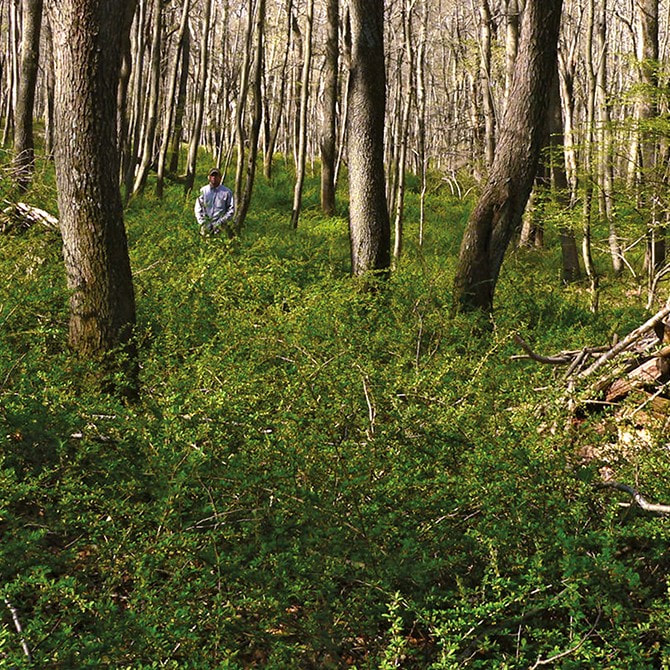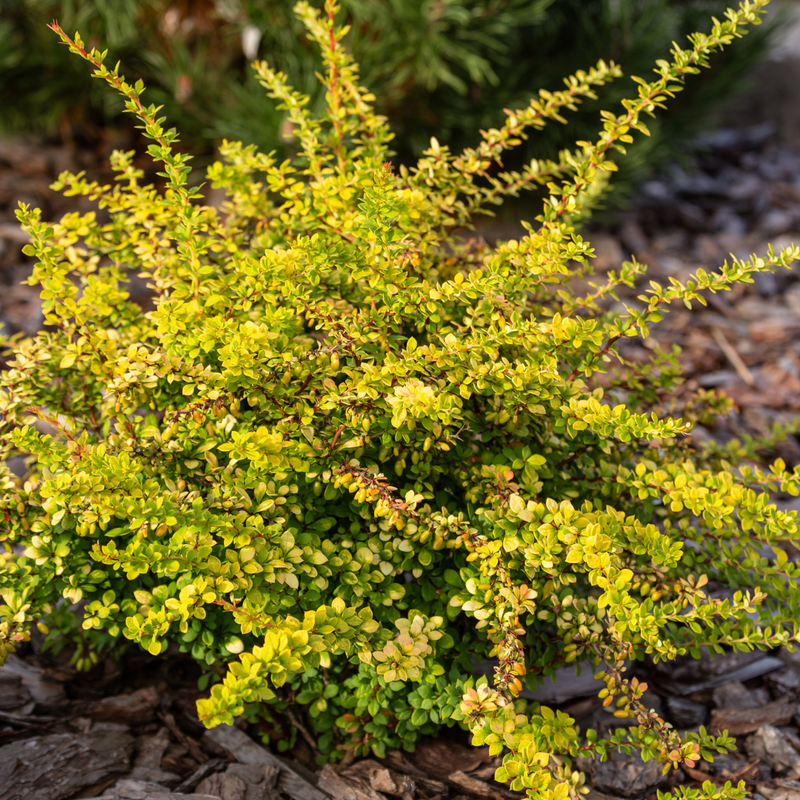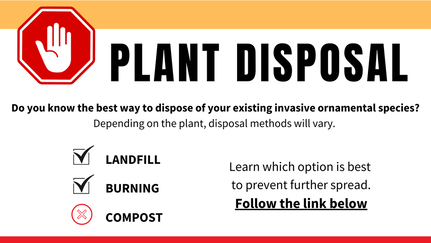|
Japanese barberry
Berberis thunbergii Hailing from Asia, as its name implies, Japanese barberry is a woody shrub ranging from 3-6 feet in height, although larger escaped cultivars have been identified. With small, spoon-shaped leaves, red berries, distinct colors, and plentiful barbs, barberry is relatively easy to identify. However, there are many cultivars for Japanese barberry, which can alter characteristics such as leaf color or size. (See images below)
Japanese barberry is still readily sold in garden centers and used in landscapes within Michigan (although some neighboring states are beginning to ban its use). Historically, it has been valued as an ornamental plant for it its colors which range from lime green to a deep burgundy. Additionally, barberry is naturally deer resistant due to the aforementioned barbs (thorns). When it escapes cultivation, barberry easily takes over a landscape, crowding out beneficial native plants. Typically the first to leaf-out in the spring and the last to lose its leaves in the fall, other plants competing for sunlight struggle to grow. Barberry invasion photo credit: Williams et al., Environmental Entomology, September 2017
Learn More About Japanese Barberry
|
Barberry Facts
Management Options
|
|
Created by the Northwest Michigan Invasive Species Network
|
Go Beyond Beauty is funded by the Michigan Invasive Species Grant Program (MISGP)
|







